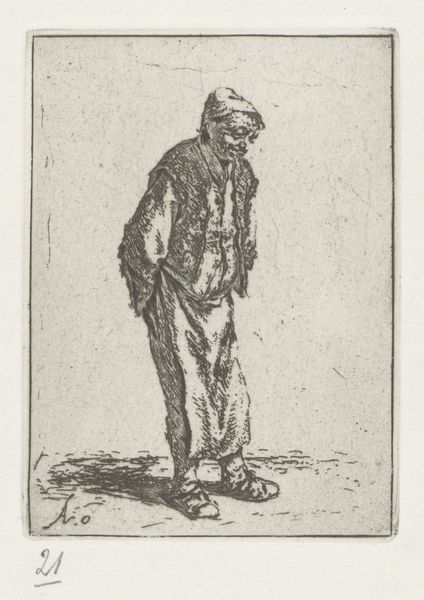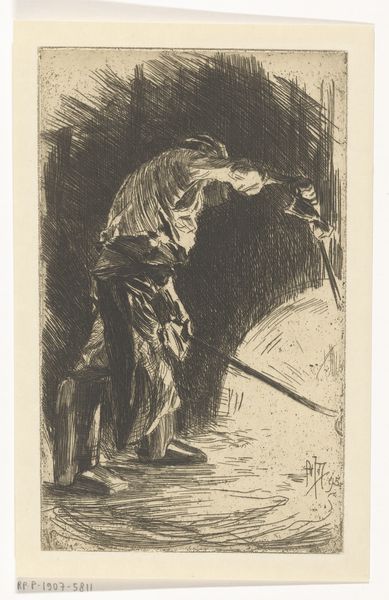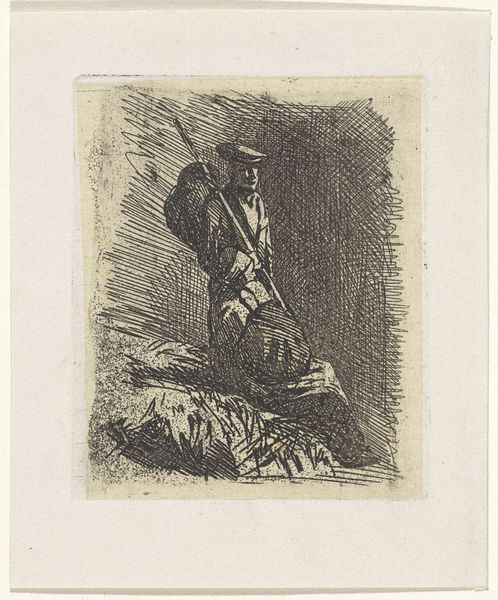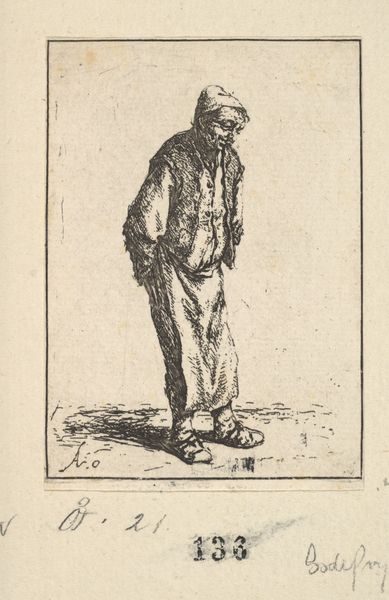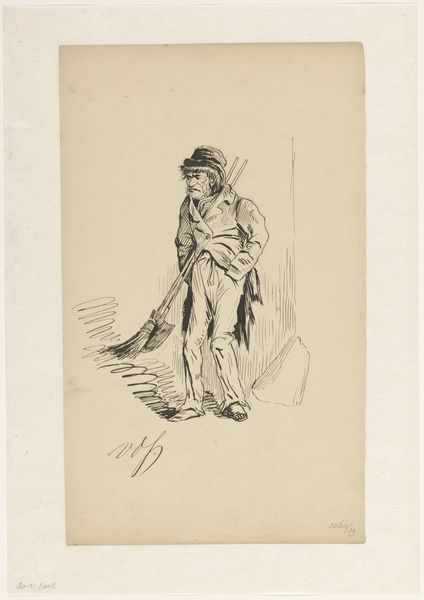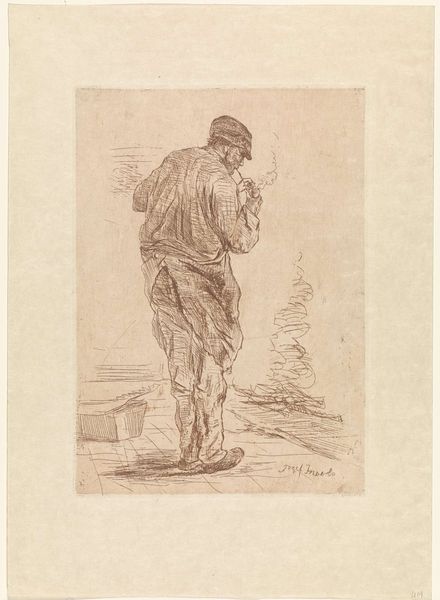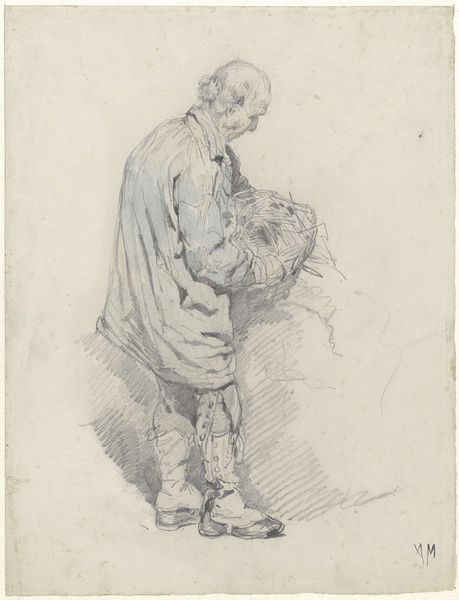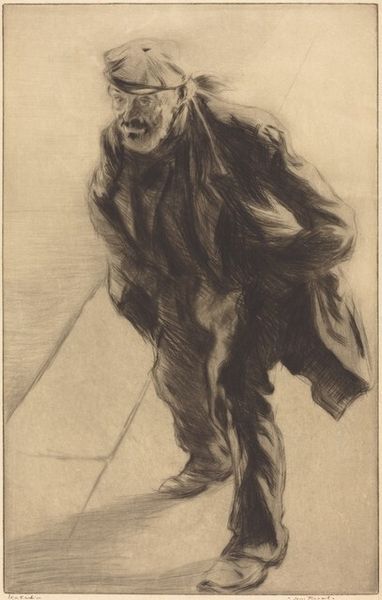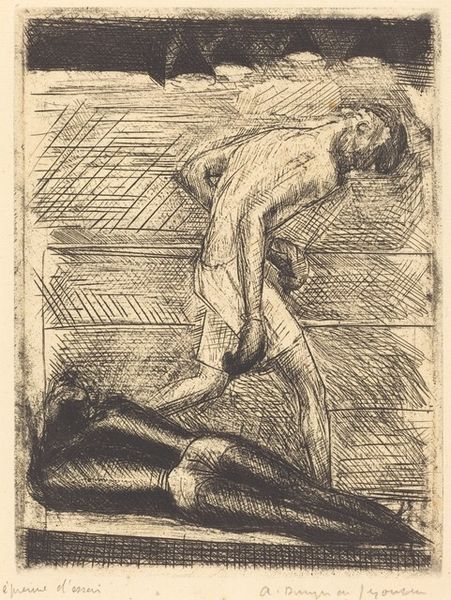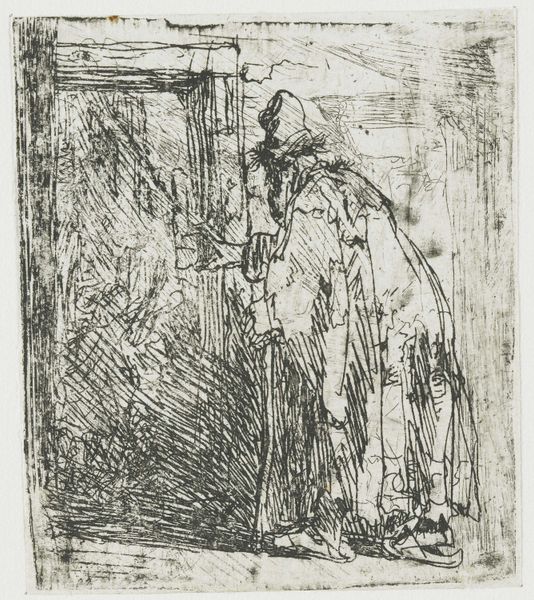
drawing, print, etching
#
portrait
#
drawing
#
ink drawing
# print
#
etching
#
figuration
#
realism
Dimensions: height 238 mm, width 158 mm
Copyright: Rijks Museum: Open Domain
Editor: Here we have Jozef Israëls' etching, "Oude man," created sometime between 1835 and 1911. The use of etching is really captivating. It makes the man's posture, stooped and weary, stand out starkly, despite the softness of the lines. How would you interpret this work from a purely visual perspective? Curator: Indeed. It's important to begin with a careful observation of form. Note the emphasis on line. Israëls uses hatching and cross-hatching to build up tonal variation, thereby describing form and texture, but it’s always subordinate to the line itself. It is paramount that the viewer understands the structure. Look at the dynamic interplay between the lit portions of the figure, in the robe, and the areas cast into darkness by the shadow, defining depth. Notice how the lines suggest the man's frailty and his interaction with his environment through his singular walking stick. How would you suggest that the texture contributes to our experience? Editor: I see how the rough lines add to the feeling of age, both in the subject and perhaps suggesting something of a harder lifestyle? The shading is also strategic, especially in the face; however, what about the composition, is that deliberate or am I over analyzing it? Curator: No, it's an important inquiry. Compositionally, we see a vertical orientation, yet it's mitigated by the diagonal lines that suggest his movement through space. However, this trajectory is restrained, limited; we are contained within the borders. We may even note how the relatively spare surroundings isolate the central figure, highlighting his form as one singular body rather than an inclusion in space. In my purview, the use of visual semiotics creates tension and pathos; what of your experience of that interplay? Editor: That’s interesting; so his stance and surroundings isolate him in time; thank you that was very interesting. Curator: You are quite welcome; careful observations are the basis for so many rewarding insights.
Comments
No comments
Be the first to comment and join the conversation on the ultimate creative platform.
